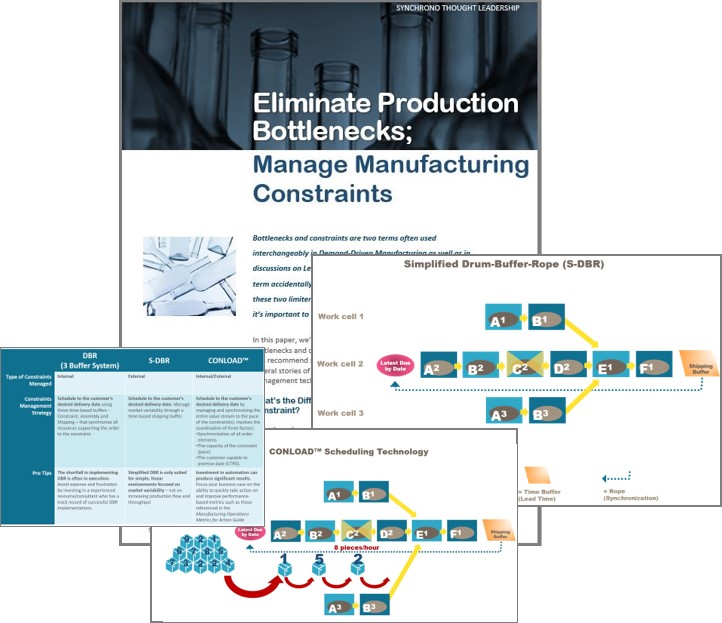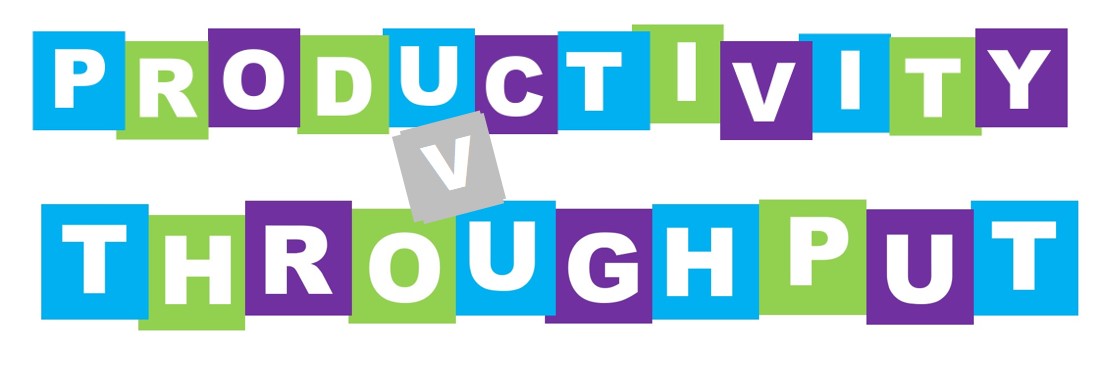Blog
-

What’s the Difference Between a Manufacturing Bottleneck and a Constraint?
Bottlenecks and constraints are two terms that are often used interchangeably in Demand-Driven Manufacturing as well as in discussions on Lean Manufacturing and flow. It’s easy to use one term when you actually mean the other. However, since these two limiters on throughput need to be addressed differently, it’s important to understand the distinction. What…
-

Synchrono® Reviews Strategies for Managing Manufacturing Bottlenecks and Constraints
Synchrono® Reviews Strategies for Managing Manufacturing Bottlenecks and Constraints New paper outlines variations from the Theory of Constraint’s Drum-Buffer-Rope method and how it has evolved through synchronization technology…MORE
-

Thought Leadership: Eliminate Production Bottlenecks; Manage Manufacturing Constraints
What is the difference between a bottleneck and a constraint? And, what’s the best strategy for managing each of these inhibitors to production flow? Eliminate Production Bottlenecks; Manage Manufacturing Constraints explains how Lean and Demand-Driven Manufacturers categorize constraints and bottlenecks – and why they need to be addressed differently. The paper reviews:
-

Increase Throughput by Replacing Manufacturing Productivity and Efficiency Metrics with These Two KPIs
Manufacturing productivity is a useful metric for measuring the health of manufacturing at a national or global level because it tells us something about whether our factories, in general, are working or sitting idle. But at the level of the individual factory, productivity as a performance metric can be problematic. Before we travel too far…
-

Video: SyncView® Real-Time Manufacturing Visualization System – 4 min. Overview
Video: SyncView® Real-Time Manufacturing Visualization System – 4 min. Overview
-

The Best Time to Kick Off a Continuous Improvement Initiative
Prosperity is perhaps one of the greatest obstacles to continuous improvement in manufacturing. When things are going well, we don’t feel the need to make improvements quite as keenly. For example, instead of focusing on removing waste in our factories to become more cost competitive, we might opt to add capacity so we can keep…
